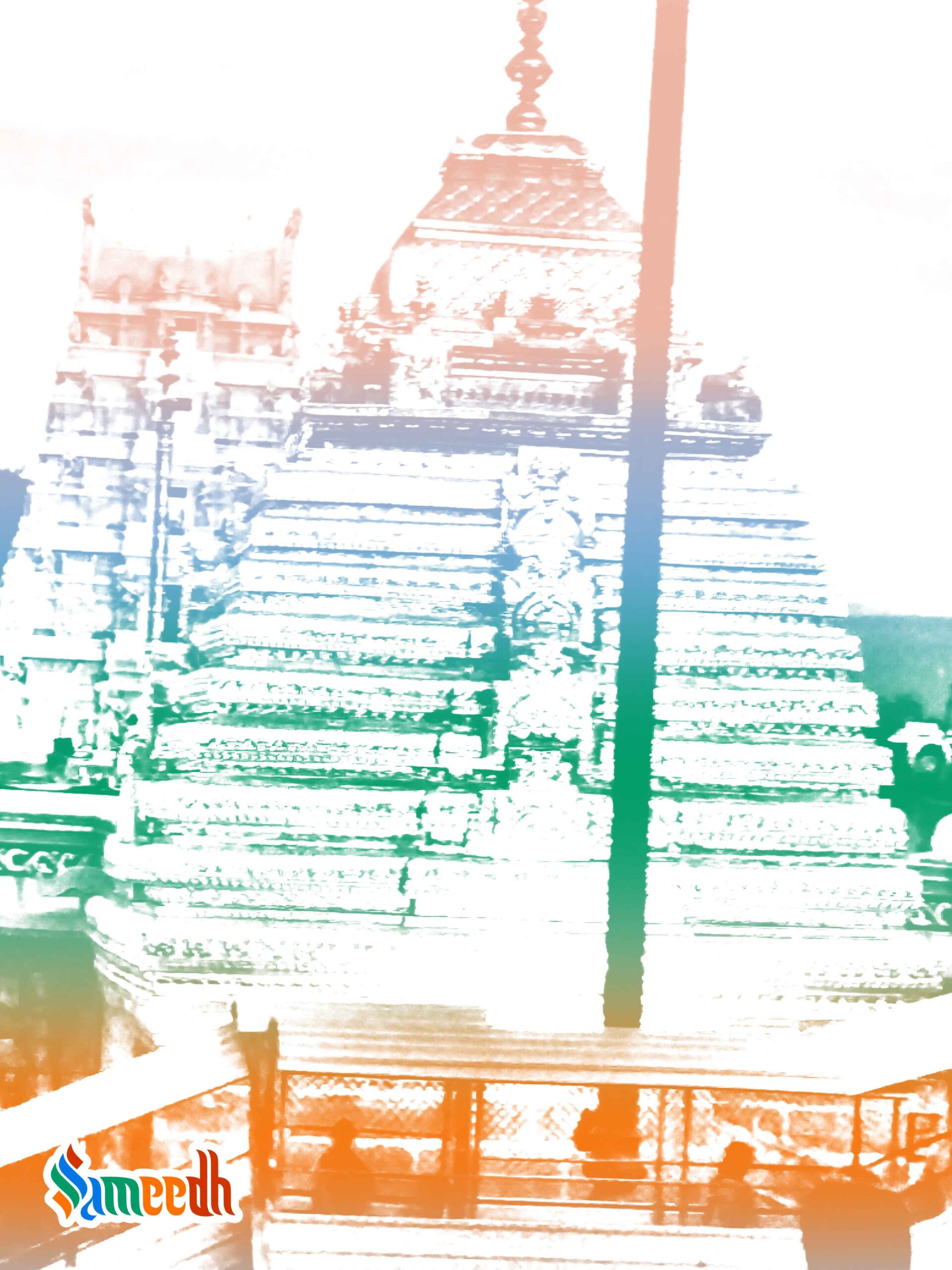Shiv and Parvati self-manifested on the Srishailam in an attempt to pacify their son Kartikey and remain close to him so that Maa Parvati may not feel distraught.

Image Source: Saisumanth
LOCATION
Sri Mallikarjun Jyotirling Temple is a Hindu temple dedicated to the deities Shiv and Parvati, located at Srishailam in the Indian state of Andhra Pradesh. It is significant to the Hindu sects of both Shaivism and Shaktism as this temple is referred to as one of the twelve Jyotirlingas of Shiv and as one of the eighteen Maha-Shakti Peeths.
MYTHOLOGY
As per Shiv Puran, Lord Shiv and Goddess Parvati came with an idea that the one, who comes back after going around the earth seven times will get married first. By the time Lord Kartikey could go round the world on his peacock, Lord Ganesh went round his parents 7 times (according to Shastras, parikrama around one’s parents is equivalent to parikrama around the world) and became the first one to get married. At the time Lord Kartikey came back after orbiting the whole earth, the marriage of Lord Ganesh was done with Buddhi and Siddhi. Devrishi Narad narrated the whole episode to Lord Kartikey, who annoyed by this episode, he followed the etiquette to bow his parents last time and walked away from there. Leaving his parents behind, Lord Kartikey went on the ‘Kraunch Mountain’. Goddess Parvati was distraught due to his son’s affection so she with Lord Shiv reached out to Kartikey. On seeing his father coming over to pacify him, he moved further from there. The departure of Kartikey, made Lord Shiv manifest in the form of Jyotirling on the mountain itself. As per Hindu legend, the presiding deity in the form of Ling was worshipped with jasmine (locally called in Telugu as Mallika), leading to the name of presiding deity as Mallikarjun.
SIGNIFICANCE
Shiv in this temple is referred to as one of the twelve Jyotirlings. Goddess Bramarambha’s shrine is referred to as one of the fifty-two Shakti peeths. This temple is classified as one of the ‘Paadal Petra Sthalam’. On the way to the main temple is the ‘Shikhareshwaram’ temple. It is said that with a darshan of this temple one gets free of rebirths. Krishna River here is called Patal Ganga and one has to go down 852 stairs to reach the river. The Shivling is bathed in the water of this river. It is one of the 18 Maha-Shakti Peeth, holy abodes formed due to the falling of Sati’s body parts when Shiv had carried the body and wandered. It is believed that Sati Devi’s Upper lip has fallen here. Shailkand is mentioned in the Skandpuran too. The temple description is also mentioned in it. It is said that when Adi Shankaracharya had visited the temple, he laid the foundations of Shivnand Lahiri.
ARCHITECTURE
The temple complex covers 2 hectares and houses four gateway towers known as gopurams. The temple has numerous shrines, with those of Mallikarjun and Bhramaramba being the most prominent. The temple complex houses many halls; the most notable is the Mukha Mandapa built during the Vijayanagar period. The temple is situated facing East. The central mandapam has several pillars, with a huge idol of Nandikeshwar. The temple is enclosed by tall walls measuring 183 m by 152 m and 8.5 m tall. There are a number of sculptures in the precinct each rising above another. The Mukamandap, the hall leading to the sanctum, has intricately sculpted pillars. The shrine where Mallikarjun is housed is considered the oldest in the temple, dating back to the 7th century. There is a Sahastra ling (1000 ling), believed to have been commissioned by Rama and five other lingams believed to have been commissioned by Pandavs. A mirror hall in the first precinct has images of Nataraj.
The temple of Goddess Parvati, represented as Bhramaramba is enclosed by tall walls measuring 183 m by 152 m and 8.5 m tall. Several sculptures are imprinted on the walls of the temple. The most modern and notable changes of the temple were made during the time of King Harihar of Vijaya Nagar period. There is inscriptional evidence from the Satavahana dynasty which place the temple to be existent from the 2nd century. Most modern additions were done during the time of king Harihara I of Vijayanagar Empire. The ‘Veerasheromandapam’ and ‘Patalganga’ steps were constructed during the time of Reddi Kingdom.
HOW TO REACH SRISHAILAM
Srishailam Mallikarjun Temple is located around 180 kilometres from Kurnool, and 213 kilometres from Hyderabad. Pilgrims can come by train by alighting at the railway station of either Markapur or Tarlupadu. These stations are between 2 and 2.5 hours by road.